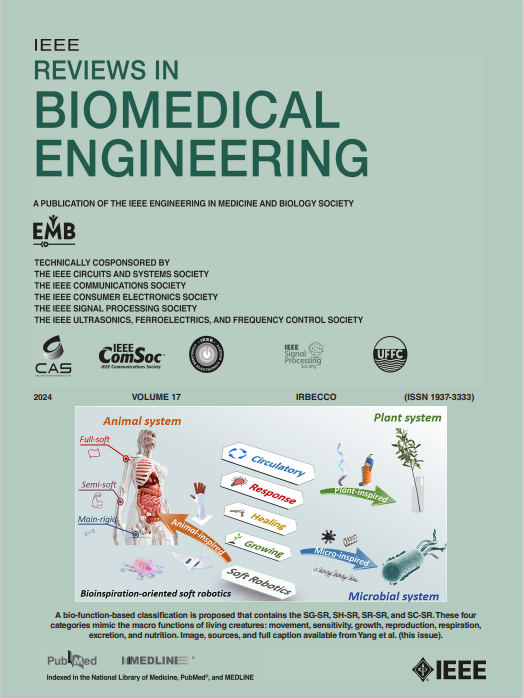Alzheimer's Disease Diagnosis in the Preclinical Stage: Normal Aging or Dementia
IF 17.2
1区 工程技术
Q1 ENGINEERING, BIOMEDICAL
引用次数: 0
Abstract
Alzheimer's disease (AD) progressively impairs the memory and thinking skills of patients, resulting in a significant global economic and social burden each year. However, diagnosis of this neurodegenerative disorder can be challenging, particularly in the early stages of developing cognitive decline. Current clinical techniques are expensive, laborious, and invasive, which hinders comprehensive studies on Alzheimer's biomarkers and the development of efficient devices for Point-of-Care testing (POCT) applications. To address these limitations, researchers have been investigating various biosensing techniques. Unfortunately, these methods have not been commercialized due to several drawbacks, such as low efficiency, reproducibility, and the lack of accurate identification of AD markers. In this review, we present diverse promising hallmarks of Alzheimer's disease identified in various biofluids and body behaviors. Additionally, we thoroughly discuss different biosensing mechanisms and the associated challenges in disease diagnosis. In each context, we highlight the potential of realizing new biosensors to study various features of the disease, facilitating its early diagnosis in POCT. This comprehensive study, focusing on recent efforts for different aspects of the disease and representing promising opportunities, aims to conduct the future trend toward developing a new generation of compact multipurpose devices that can address the challenges in the early detection of AD.临床前阶段的阿尔茨海默病诊断:正常衰老还是痴呆症
阿尔茨海默病(AD)会逐渐损害患者的记忆和思维能力,每年给全球造成巨大的经济和社会负担。然而,对这种神经退行性疾病的诊断具有挑战性,尤其是在认知能力下降的早期阶段。目前的临床技术昂贵、费力且具有侵入性,这阻碍了对阿尔茨海默氏症生物标志物的全面研究和用于护理点检测(POCT)的高效设备的开发。为了解决这些局限性,研究人员一直在研究各种生物传感技术。遗憾的是,由于效率低、可重复性差、无法准确识别老年痴呆症标志物等缺点,这些方法尚未商业化。在这篇综述中,我们介绍了在各种生物流体和身体行为中发现的阿尔茨海默病的各种有希望的标志物。此外,我们还深入讨论了不同的生物传感机制以及疾病诊断中的相关挑战。在每种情况下,我们都强调了实现新生物传感器的潜力,以研究疾病的各种特征,促进 POCT 的早期诊断。这项全面的研究侧重于最近针对该疾病不同方面所做的努力,代表着大有可为的机会,旨在引导未来的趋势,开发新一代紧凑型多用途设备,以应对早期检测注意力缺失症所面临的挑战。
本文章由计算机程序翻译,如有差异,请以英文原文为准。
求助全文
约1分钟内获得全文
求助全文
来源期刊

IEEE Reviews in Biomedical Engineering
Engineering-Biomedical Engineering
CiteScore
31.70
自引率
0.60%
发文量
93
期刊介绍:
IEEE Reviews in Biomedical Engineering (RBME) serves as a platform to review the state-of-the-art and trends in the interdisciplinary field of biomedical engineering, which encompasses engineering, life sciences, and medicine. The journal aims to consolidate research and reviews for members of all IEEE societies interested in biomedical engineering. Recognizing the demand for comprehensive reviews among authors of various IEEE journals, RBME addresses this need by receiving, reviewing, and publishing scholarly works under one umbrella. It covers a broad spectrum, from historical to modern developments in biomedical engineering and the integration of technologies from various IEEE societies into the life sciences and medicine.
 求助内容:
求助内容: 应助结果提醒方式:
应助结果提醒方式:


